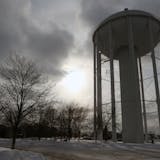Tax season might be nearing its frantic end, but Minneapolis homeowners only recently learned of the new property taxes they'll be required to pay in 2016. And unfortunately, the short window to appeal has already closed. Homeowners had only until March 27 to file an application to appeal the city's assessed value of their property.
And as I wrote a few weeks ago, many homeowners in what are considered more distressed neighborhoods might be paying a disproportionate share of property taxes, especially as the city is behind on property taxes and trying to play catch up as home values rise.
The city has a complicated system of determining market value of homes, which includes eliminating most sales of "distressed properties", mostly foreclosures, before designating average market values in a neighborhood. By tossing these out, I noted, the city unfairly places a tax burden on homeowners in distressed neighborhoods, since their taxable market values don't reflect every real sale.
Patrick Todd, a city assessor with the City of Minneapolis Assessor's Office, says the city does consider each sale to determine taxable market value, but admits it's only through a single letter requesting the opportunity to consider the sale.
"We are the only one [in Minnesota] that does this," he says. "By the fact that we do our mailing, we think we are considering every sale."
So what does that attempt to consider every sale look like? New owners of a recently purchased home in Minneapolis receive a letter, which asks if someone from the city can come out and visit their home to assess its market value. And that's the rub: the inspection is "requested," not required, and very few follow through.
Todd says he doesn't know the exact number of respondents to the letter, but he does allow that they are "pretty low," and he says that they were even lower during the foreclosure crisis a few years ago.
In other words, even without exact figures, it's safe to say that the majority of foreclosures are still thrown out, since the city hasn't been able to determine if the sale is "representative of the market."
![A black bear stopped after crossing Big Bay Road on Madeline Island, the largest of the Apostle Islands in Wisconsin, on Monday, May 31, 2021. ]](https://arc.stimg.co/startribunemedia/PWNYGIY3WTSWDBOGOYD775DPP4.jpg?&w=80&ar=1:1&fit=crop)


